June 10, 2023
Wildlife: 5 Iconic Species Unique to the Galapagos Islands
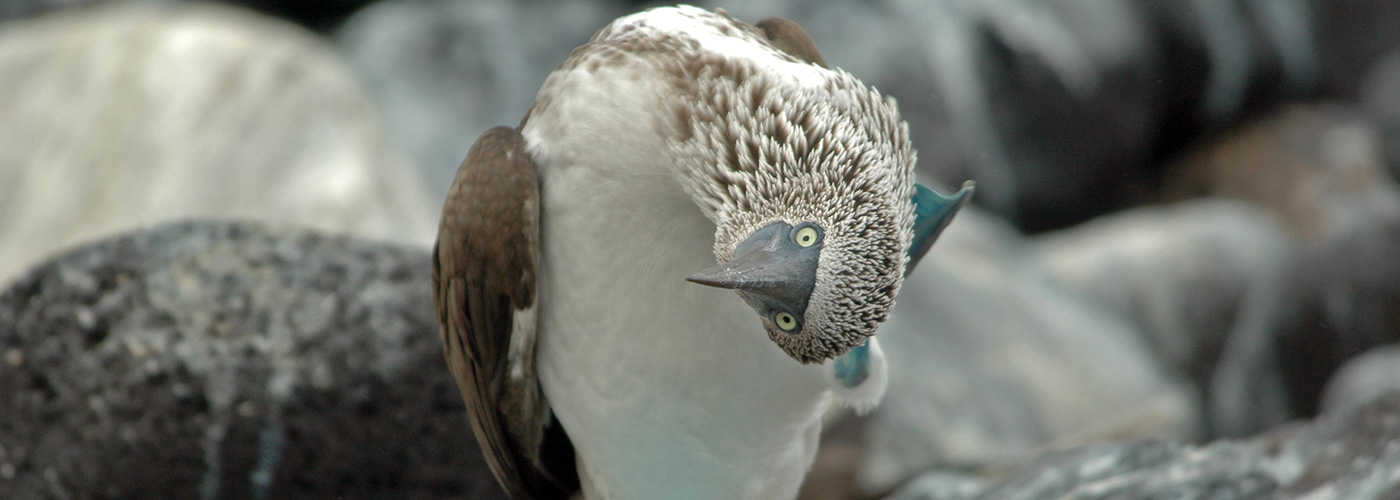
Isolation and adaptation has allowed for the animals of the Galapagos Islands to evolve into some of the most unique creatures in the world.
The unique Galapagos wildlife is what draws many travelers to our islands, but we’ve been surprised over the years about which animals people consider to be their favorites. Here are the top five iconic species of the Galapagos!
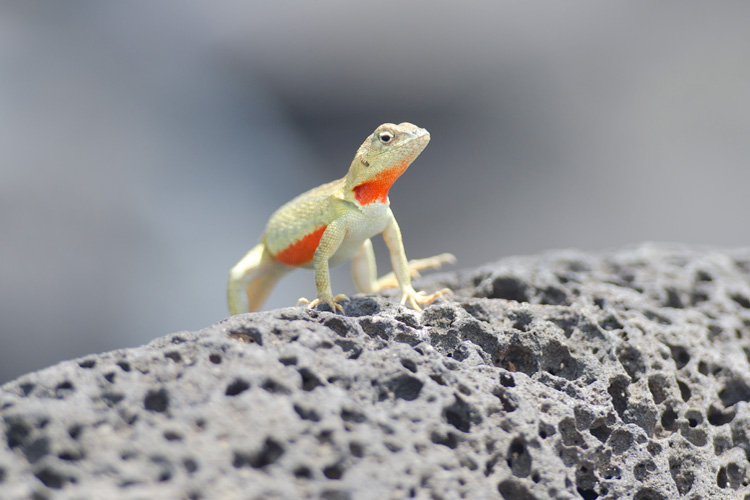
Lava Lizard in the Galapagos Islands
5 – Lava Lizards
The lava lizards of the Galapagos Islands don’t get a lot of love from our travelers as being named their “favorite” species, but once our guides start talking about these little creatures, and people learn how adaptive they are, opinions tend to change.
Some species are found on multiple islands, and you can also find lava lizards on the mainland of South America, like the coast of Peru. But, there are nine species of lava lizards that are endemic to the Galapagos Islands…meaning they are found nowhere else on earth!
Two endemic lava lizard species are shown below. See how different they look, because they are from different islands?
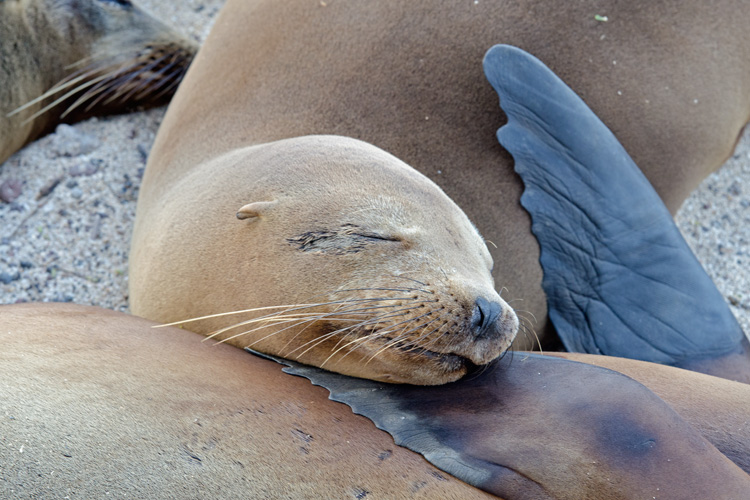
Sleeping Sea Lion in the Galapagos Islands
4 – Galapagos Sea Lions
For many visitors, the cute and endemic Galapagos sea lions get the nod of approval as best-looking animal in the Galapagos. They are often one of the first animals you’ll encounter when you come to the islands on our 6-day Galapagos Land Tour or 10-day Galapagos Adventure Tour, as they’re seen swimming in the waters near town, lounging around on beaches, or even walking and sleeping on the sidewalk!
They can get noisy, with their honking, barking and snorting sounds, but that just adds to their charm. While they are somewhat slow and awkward on land (it is funny to watch them walk!) they are very graceful in the water.
Snorkeling with sea lions in the Galapagos is often a top highlight for our travelers, as curious sea lions will come right up to your and want to play.
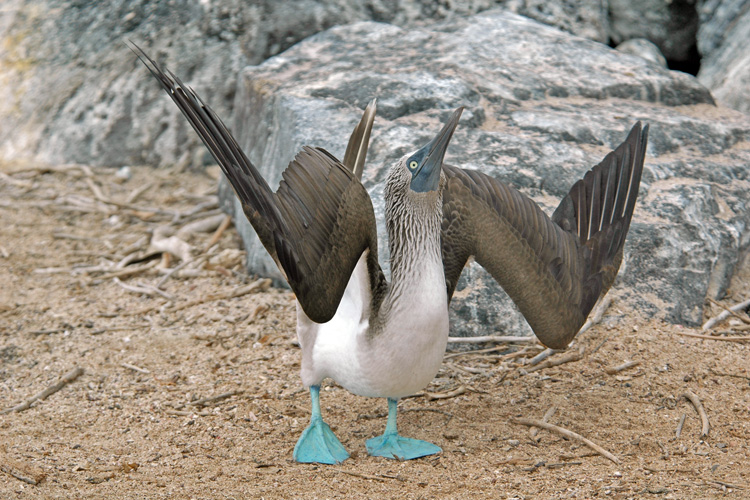
Blue-Footed Booby in the Galapagos Islands
3 – Blue-footed Boobies
There are a lot of boobies in the Galapagos, with blue ones being the favorite. These funny birds can be found just about anywhere along the coast of most of the islands in the Galapagos.
They are not endemic to the Galapagos Islands, as you can see them along the coast of Ecuador, Peru and even up in California. But half of the world’s blue-footed booby population breeds in the Galapagos, so we have a LOT of them!
They are swift birds that can often be seen diving for fish, or standing on lava rocks along the shoreline. Interestingly, their feet do not turn the iconic blue color until they’ve matured. Juvenile and baby blue-footed boobies actually have grey feet.
When it comes to souvenir shops around the islands, there is no shortage of t-shirts and postcards proudly displaying blue boobies.
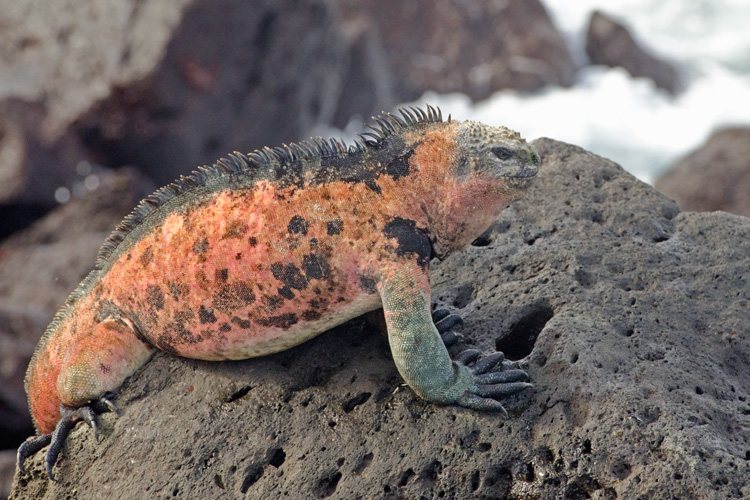
Colorful Marine Iguana in the Galapagos
2 – Marine Iguanas
One of the truly special creatures of the Galapagos, marine iguanas are endemic to the islands. They have adapted to the harsh volcanic environment by learning to eat algae underwater! You can sometimes see them swimming out and diving down, propelling themselves through the water with their long tails.
They have strong claws which allow them to grip onto lava rocks while eating under the surging waves. Their heads are very compact, and rounded, which makes it easier for them to eat. They can also expel salt from their nostrils, which is why you sometimes see them with an ugly, crusty looking face full of dried salt!
Depending on the island they live on, their source of food, and if it is mating time, marine iguanas can become brightly colored, with red being one of the dominant colors! Otherwise, they tend to be a dark grey and black color to blend in well with the lava rocks.
Many people say these are their favorite creatures of the Galapagos simply because of how weird and unique they are.
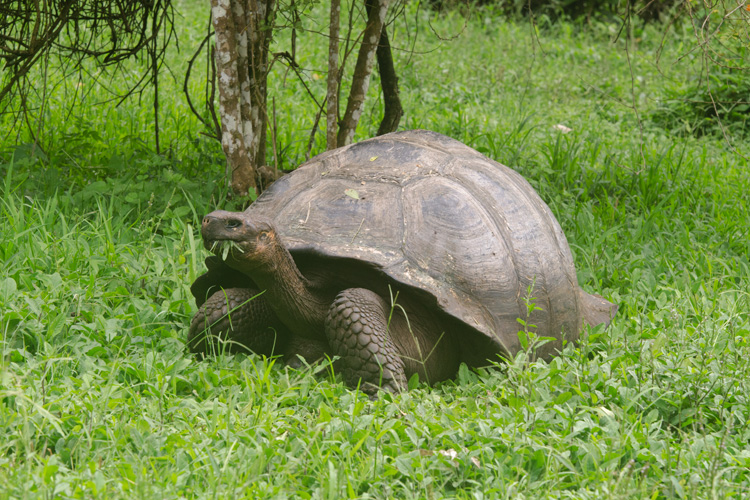
Giant Tortoise in the Galapagos Islands
1 – Giant Tortoises
Perhaps not a surprise here, but the giant tortoises of the Galapagos Islands are the top pick when it comes to most iconic species of the islands.
Most natural habitat for the giant tortoises is off-limits to visitors, but there are some places where spotting wild giant tortoises is possible. One spot is hiking up to the Sierra Negra volcano on Isabela Island. We love doing this hike on our Galakiwi tours, and every once-in-a-while we get rewarded by spotting a land iguana or giant tortoise along the way!
If you want a guaranteed spotting of Galapagos giant tortoises, then you head to the highlands of Santa Cruz Island. There are numerous farms up there, with wide open fields and extensive hiking paths, and giant tortoises live there.
At some of the popular highlands farms you may spot dozens of giant tortoises, either eating, sleeping, walking or cooling off in the mud if it’s a hot and sunny day.
There are also a number of giant tortoise research facilities on the islands, with the goal of re-populating islands where the tortoises populations have suffered. The Charles Darwin Research Station on Santa Cruz Island is the most popular place to visit for an educational tortoise encounter.
